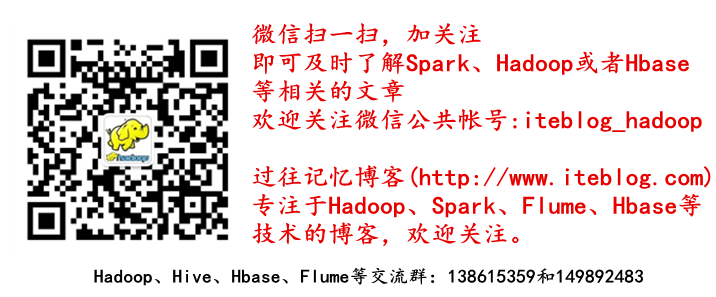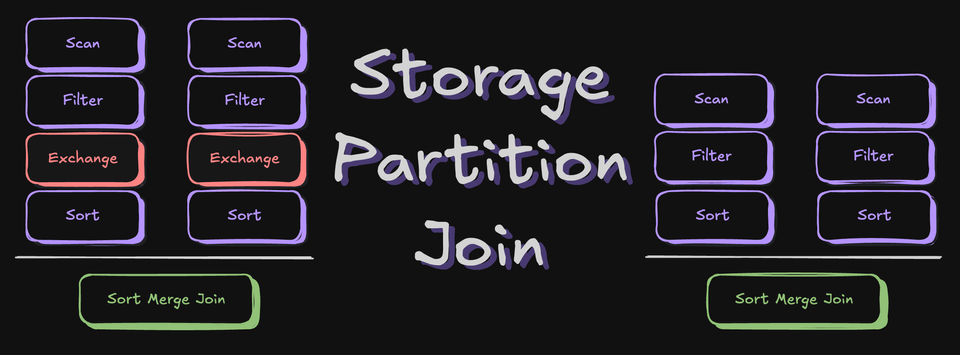文章目录
社区在Spark 1.3中开始引入了DataFrames,使得Apache Spark更加容易被使用。受R和Python中的data frames激发,Spark中的DataFrames提供了一些API,这些API在外部看起来像是操作单机的数据一样,而数据科学家对这些API非常地熟悉。统计是日常数据科学的一个重要组成部分。在即将发布的Spark 1.4中改进支持统计函数和数学函数(statistical and mathematical functions)。
这篇文章中将介绍一些非常重要的函数,包括:
1、随机数据生成(Random data generation);
2、总结和描述性统计(Summary and descriptive statistics);
3、样本协方差和相关性(Sample covariance and correlation);
4、交叉分类汇总表(又称列联表)(Cross tabulation);
5、频繁项(Frequent items);
6、数学函数(Mathematical functions)。
下面的例子全部是使用Python语言实现,在Scala和Java中存在类似的API。
一、随机数据生成(Random data generation)
随机数据生成在测试现有的算法和实现随机算法中非常重要,比如随机投影。在sql.functions函数里面提供了生成包含i.i.uniform(rand)和标准的normal(randn)。
In [1]: from pyspark.sql.functions import rand, randn
In [2]: # Create a DataFrame with one int column and 10 rows.
In [3]: df = sqlContext.range(0, 10)
In [4]: df.show()
+--+
|id|
+--+
| 0|
| 1|
| 2|
| 3|
| 4|
| 5|
| 6|
| 7|
| 8|
| 9|
+--+
In [4]: # Generate two other columns using uniform distribution and normal distribution.
In [5]: df.select("id", rand(seed=10).alias("uniform"), randn(seed=27).alias("normal")).show()
+--+-------------------+--------------------+
|id| uniform| normal|
+--+-------------------+--------------------+
| 0| 0.7224977951905031| -0.1875348803463305|
| 1| 0.2953174992603351|-0.26525647952450265|
| 2| 0.4536856090041318| -0.7195024130068081|
| 3| 0.9970412477032209| 0.5181478766595276|
| 4|0.19657711634539565| 0.7316273979766378|
| 5|0.48533720635534006| 0.07724879367590629|
| 6| 0.7369825278894753| -0.5462256961278941|
| 7| 0.5241113627472694| -0.2542275002421211|
| 8| 0.2977697066654349| -0.5752237580095868|
| 9| 0.5060159582230856| 1.0900096472044518|
+--+-------------------+--------------------+
二、总结和描述性统计(Summary and descriptive statistics)
我们在导入数据之后的第一个操作是想获取一些数据,来看看他到底是不是我们所要的。对于数字列,了解这些数据的描述性统计可以帮助我们理解我们数据的分布。describe函数返回的是一个DataFrame,而这个DataFrame中包含了每个数字列的很多信息,比如不为空的实体总数、平均值、标准差以及最大最小值。
In [1]: from pyspark.sql.functions import rand, randn
In [2]: # A slightly different way to generate the two random columns
In [3]: df = sqlContext.range(0, 10).withColumn('uniform', rand(seed=10)).withColumn('normal', randn(seed=27))
In [4]: df.describe().show()
+-------+------------------+-------------------+--------------------+
|summary| id| uniform| normal|
+-------+------------------+-------------------+--------------------+
| count| 10| 10| 10|
| mean| 4.5| 0.5215336029384192|-0.01309370117407197|
| stddev|2.8722813232690143| 0.229328162820653| 0.5756058014772729|
| min| 0|0.19657711634539565| -0.7195024130068081|
| max| 9| 0.9970412477032209| 1.0900096472044518|
+-------+------------------+-------------------+--------------------+
如果返回的DataFrame含有大量的列,你可以返回其中的一部分列:
In [4]: df.describe('uniform', 'normal').show()
+-------+-------------------+--------------------+
|summary| uniform| normal|
+-------+-------------------+--------------------+
| count| 10| 10|
| mean| 0.5215336029384192|-0.01309370117407197|
| stddev| 0.229328162820653| 0.5756058014772729|
| min|0.19657711634539565| -0.7195024130068081|
| max| 0.9970412477032209| 1.0900096472044518|
+-------+-------------------+--------------------+
当然,虽然describe在那些快速探索性数据分析中可以很好的工作,你还可以控制描述性统计的展示以及那些使用DataFrame中简单选择的列(这句话好别扭,请看英文you can also control the list of descriptive statistics and the columns they apply to using the normal select on a DataFrame:)
In [5]: from pyspark.sql.functions import mean, min, max
In [6]: df.select([mean('uniform'), min('uniform'), max('uniform')]).show()
+------------------+-------------------+------------------+
| AVG(uniform)| MIN(uniform)| MAX(uniform)|
+------------------+-------------------+------------------+
|0.5215336029384192|0.19657711634539565|0.9970412477032209|
+------------------+-------------------+------------------+
三、样本协方差和相关性(Sample covariance and correlation)
协方差表示的是两个变量的总体的误差。正数意味着其中一个增加,另外一个也有增加的趋势;而负数意味着其中一个数增加,另外一个有降低的趋势。DataFrame两列中的样本协方差计算可以如下:
In [1]: from pyspark.sql.functions import rand
In [2]: df = sqlContext.range(0, 10).withColumn('rand1', rand(seed=10)).withColumn('rand2', rand(seed=27))
In [3]: df.stat.cov('rand1', 'rand2')
Out[3]: 0.009908130446217347
In [4]: df.stat.cov('id', 'id')
Out[4]: 9.166666666666666
正如你从上面看到的,两个随机生成的列之间的协方差接近零;而id列和它自己的协方差非常大。
协方差的值为9.17可能很难解释,而相关是协方差的归一化度量,这个相对更好理解,因为它提供了两个随机变量之间的统计相关性的定量测量。
In [5]: df.stat.corr('rand1', 'rand2')
Out[5]: 0.14938694513735398
In [6]: df.stat.corr('id', 'id')
Out[6]: 1.0
在上面的例子中,ID那列完全与相关本身;而两个随机生成的列之间的相关性非常低。
四、交叉分类汇总表(又称列联表)(Cross tabulation)
如果同时按几个变量或特征,把数据分类列表时,这样的统计表叫作交叉分类汇总表,其主要用来检验两个变量之间是否存在关系,或者说是否独立。在Spark 1.4中,我们可以计算DataFrame中两列之间的交叉分类汇总表,以便获取计算的两列中不同对的数量,下面是关于如何使用交叉表来获取列联表的例子
In [1]: # Create a DataFrame with two columns (name, item)
In [2]: names = ["Alice", "Bob", "Mike"]
In [3]: items = ["milk", "bread", "butter", "apples", "oranges"]
In [4]: df = sqlContext.createDataFrame([(names[i % 3], items[i % 5]) for i in range(100)], ["name", "item"])
In [5]: # Take a look at the first 10 rows.
In [6]: df.show(10)
+-----+-------+
| name| item|
+-----+-------+
|Alice| milk|
| Bob| bread|
| Mike| butter|
|Alice| apples|
| Bob|oranges|
| Mike| milk|
|Alice| bread|
| Bob| butter|
| Mike| apples|
|Alice|oranges|
+-----+-------+
In [7]: df.stat.crosstab("name", "item").show()
+---------+----+-----+------+------+-------+
|name_item|milk|bread|apples|butter|oranges|
+---------+----+-----+------+------+-------+
| Bob| 6| 7| 7| 6| 7|
| Mike| 7| 6| 7| 7| 6|
| Alice| 7| 7| 6| 7| 7|
+---------+----+-----+------+------+-------+
我们需要记住,列的基数不能太大。也就是说,name和item distinct之后的数量不能过多。试想,如果item distinct之后的数量为10亿,那么你如何在屏幕上显示这个表??
五、频繁项(Frequent items)
了解列中那些频繁出现的item对于我们了解数据集非常重要。在Spark 1.4中,我们可以通过使用DataFrames来发现列中的频繁项,
In [1]: df = sqlContext.createDataFrame([(1, 2, 3) if i % 2 == 0 else (i, 2 * i, i % 4) for i in range(100)], ["a", "b", "c"]) In [2]: df.show(10) +-+--+-+ |a| b|c| +-+--+-+ |1| 2|3| |1| 2|1| |1| 2|3| |3| 6|3| |1| 2|3| |5|10|1| |1| 2|3| |7|14|3| |1| 2|3| |9|18|1| +-+--+-+ In [3]: freq = df.stat.freqItems(["a", "b", "c"], 0.4)
对应上面的DataFrame,下面的代码可以计算出每列中出现40%的频繁项
In [4]: freq.collect()[0] Out[4]: Row(a_freqItems=[11, 1], b_freqItems=[2, 22], c_freqItems=[1, 3])
正如你所看到的,11和1是列a的频繁值。同样,你也可以获取到列组合的频繁项,我们可以通过struct函数来创建列组合
In [5]: from pyspark.sql.functions import struct
In [6]: freq = df.withColumn('ab', struct('a', 'b')).stat.freqItems(['ab'], 0.4)
In [7]: freq.collect()[0]
Out[7]: Row(ab_freqItems=[Row(a=11, b=22), Row(a=1, b=2)])
对于上面的例子来说,“a=11 and b=22”和“a=1 and b=2”的组合频繁出现在数据集中。注意“a=11 and b=22”是为假阳性。
六、数学函数(Mathematical functions)
Spark 1.4中增加了一系列的数学函数,用户可以自如地将这些操作应用到他们列。我可以在这里看到所有的数学函数。输入必须是一个列函数,并且这个列函数只能输入一个参数,比如cos, sin, floor, ceil。对于那些需要输入两个参数的列函数,比如pow, hypot,我们可以输入两列或者列的组合。
In [1]: from pyspark.sql.functions import *
In [2]: df = sqlContext.range(0, 10).withColumn('uniform', rand(seed=10) * 3.14)
In [3]: # you can reference a column or supply the column name
In [4]: df.select(
...: 'uniform',
...: toDegrees('uniform'),
...: (pow(cos(df['uniform']), 2) + pow(sin(df.uniform), 2)). \
...: alias("cos^2 + sin^2")).show()
+--------------------+------------------+------------------+
| uniform| DEGREES(uniform)| cos^2 + sin^2|
+--------------------+------------------+------------------+
| 0.7224977951905031| 41.39607437192317| 1.0|
| 0.3312021111290707|18.976483133518624|0.9999999999999999|
| 0.2953174992603351|16.920446323975014| 1.0|
|0.018326130186194667| 1.050009914476252|0.9999999999999999|
| 0.3163135293051941|18.123430232075304| 1.0|
| 0.4536856090041318| 25.99427062175921| 1.0|
| 0.873869321369476| 50.06902396043238|0.9999999999999999|
| 0.9970412477032209| 57.12625549385224| 1.0|
| 0.19657711634539565| 11.26303911544332|1.0000000000000002|
| 0.9632338825504894| 55.18923615414307| 1.0|
+--------------------+------------------+------------------+
本文提到的所有函数将在Spark 1.4中可用,并且支持Python、Scala和Java调用。Spark 1.4将在近期发布。如果你等不及了,你可以到https://github.com/apache/spark/tree/branch-1.4里面下载。
原创文章版权归过往记忆大数据(过往记忆)所有,未经许可不得转载。
本文链接: 【Spark1.4中DataFrame功能加强,新增科学和数学函数】(https://www.iteblog.com/archives/1382.html)










为什么现在视频都下载不了了?
哪些?下载页面有什么提示呢?